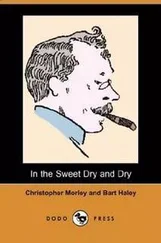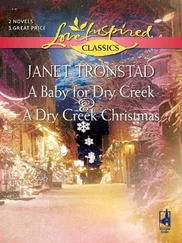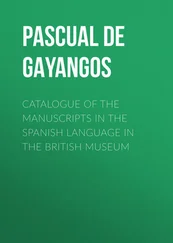Another strand of argument is centred on practical considerations. The mere availability of the stylus as a writing implement may have been reason enough to use it in a MS context, too, even if it was not as easily readable as ink, or as Page puts it: “In a society where ink was not readily available, it was easier to make notes with dry-point” (2001: 241). Rusche suggests that dry-point writing perhaps predominantly took place outside the scriptorium (where quill and ink would have been ready to use):
Ink was neither rare nor expensive in the Middle Ages, but it had to be mixed before use, and any surplus would soon dry out. Also necessary was an inkhorn or some other vessel to hold the ink, a quill and a knife for sharpening the nib. While these materials were readily available in the scriptorium, a monk in another part of the monastery, such as the library, classroom or cell, had to rely on the only writing instruments that were always at hand: a wax tablet and a stylus. (Rusche 1994: 196)
This is an interesting thought experiment and I cannot think of a way to falsify the ideas behind it, but there is no way to corroborate them, either. We do not know when and where dry-point glossing was practiced during the daily routine of the monastery. We also do not know what the profile of the typical dry-point glossator might have been. Rusche surmises that the predominance of lexical dry-point glosses might be in line with a student “struggling to understand the Latin text” (1994: 199). The hypothesis that practical notions may have played a role in the choice of the stylus as writing implement seems plausible to me, yet the extant corpus of dry-point glosses would have to be investigated carefully for patterns of functional tendencies in the extant dry-point glossing first. Studies that consistently classify a specific corpus of dry-point glosses according to functional criteria remain yet to be published.
A model for such functional criteria is presented by Richter (1996: liv–lv) who classifies the OE ink glosses of London, British Library Royal 6. B. viiLondon, British LibraryRoyal 6. B. vii [K:255] according to an elaborate functional scheme, allowing him to draw conclusions about the status of the MS as a library copy, rather than a classroom book. It would surely be interesting to apply such functional criteria to dry-point gloss MSS to fathom to what extent the functional “profiles” of the glossing differs firstly between the MSS, secondly between the glossing hands and thirdly between ink and dry-point glosses.
Such profiles would have to take L. glossing into consideration, too, though, as Gwara (1999: 822) convincingly argues, and he therefore finds fault with Richter’s study that seemingly ignores the presence of thousands of L. glosses besides the 502 OE glosses in the same MS. Vernacular glossing did not take place in a vacuum; rather, it was an additional layer of annotation in a particular MS that hence must always be studied in its immediate context. Especially so, since Richter tries to show that the difficulty of L. words does not correlate with their likelihood of being glossed in OE. He provides an example of such an arguably “easy” item of L. vocabulary in the word L. frigidus glossed with OE cól ,4 and he observes that other (unfortunately unspecified) “difficult” items remain unglossed (Richter 1994: lxi). Deciding which L. words would be considered as “difficult” and which ones as “easy” by an Anglo-Saxon readership is a precarious enterprise in itself. If we think of the situation in which the particular items of OE glossing were added, however, it is beyond doubt that the presence of L. glosses in the MS surely would have influenced the necessity for further glossing. Hence, that context has to be taken into consideration, too. If we look at the passage surrounding the L. word frigidus in London, British Library Royal 6. B. vii [K:255], f. 46 rwe find the surrounding passage to be glossed quite frequently in L.:
sed et [gl.: s. anatolia] marsum [gl.: galdor], qui uirulentos natrices [gl.: i. serpents] ad sacrae uirginis laesionem incantationum [gl.: galdra] carminibus irritabat [gl.: prouocabat] – ut poeta ait: ‘Frigidus [gl. (OE): cól] in pratis cantando rumpitur anguis [gl. (OE): næddre]’ – diris spiris [gl.: i. nexibus] inuolutum perniciter eripuit. (cf. Gwara 2001b: 696–697)
The addition of the two OE ink glosses happened in this heavily glossed surroundings and it is important to note that the two glosses are part of the same noun phrase, quoted from Vergil’s Eclogue VIII, 71: “In the meadows the cold snake is burst by incantation.” Ignoring the thousands of L. glosses that surround the OE glosses and ignoring the details of the L. text in the assessment of the OE glossing, then, makes all statements about the function of an individual gloss that is added in the middle of a heavily glossed text tenuous, at best. Here, I think, it can be argued that the comparatively easy L. word frigidus was glossed because it forms a noun phrase with the far-away and much less “easy” L. word anguis , which happens to be glossed in three other MSS of the same text, too (if this can be taken as an indicator of difficulty).
As far as I know, no functional studies have been carried out on OE dry-point glosses. Where the function of dry-point glosses (as opposed to ink glosses) is concerned, questions about the visibility and, more importantly, legibility of dry-point glosses back in the Anglo-Saxon period have to be addressed, too. Rusche thinks that the difficult visual appearance was inherent in the manner of writing without ink: “Scratched glosses were probably no easier to read when they were first made than they are now” (1994: 195). Page, though, expresses some doubts about this assumption:
I suspect that comparatively modern binding methods, where the book is put in a press to secure it firmly, could well have evened out depressions in a parchment surface. I have no evidence for it; only a general knowledge of what earlier modern binders might do in the interests of neatness rather than of scholarship. And of course very few Anglo-Saxon manuscripts retain early bindings. Further, any centuries of variations in temperature and humidity could have affected the characteristic detail of a parchment surface. (Page 2001: 221)
The bookbinders’ interests of neatness that Page refers to are well attested by codices whose margins have been cut off to form a perfectly even body of the book, sometimes even accepting loss of text or illuminations (let alone marginal glosses). It is easily possible that the compression applied during binding would have had a detrimental effect on the microscopic structures that had been produced by the dry-point writing. Jakobi-Mirwald (1993: 19a) reports that the dry-point glosses in Fulda, Hochschul- und Landesbibliothek Bonifatianus 2Fulda, Hochschul- und Landesbibliothek Bonifatianus 2 [12/K:A41] have become “kaum noch verifizierbar”5 after the MS was restored in 1978; although she does not explicitly state what procedures were applied in the restoration process, it can be assumed that pressing may have been involved. Moreover, parchment, being an organic fabric, reacts quite markedly to humidity by swelling up and to extreme dryness by becoming warped and stiff. As far as I know, no scientific experiments considering the influence of such processes on dry-point writing have been carried out.6
Even if Page’s suspicion that dry-point writing deteriorates over time should turn out to be right, it is still quite certain that dry-point writing was not perfectly visible, even in Anglo-Saxon times. The ambient lighting situation must have played an important role back in the day, just as much as it does in the 21 stc.7 It may be safely assumed, though, that the Anglo-Saxon reader would perhaps at least sometimes have been at liberty to choose a suitable seat to allow the daylight to shine benevolently on the MS page at the right angle. Such liberties can often no longer be taken by the modern researcher, as in most present-day repositories the workstations for the study of medieval MSS are clearly demarcated; whether the ambient light happens to be right thus becomes mainly a matter of coincidence. Whoever entered the dry-point writing in medieval times, though, must have been working on the MS in a suitable spot, as it does not seem plausible that dry-point writing would have been employed, had it not been plainly legible at the moment of writing.
Читать дальше












